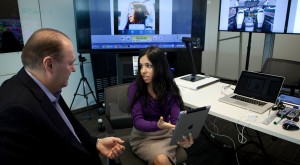Sharoda Paul, a former CIFellow, was recently featured in the New York Times article,“Looking to Industry for the Next Digital Disruption.” After her postdoctoral fellowship at a Palo Alto research center as a 2010-11 CIFellow, Sharoda Paul, an expert in social computing, chose a different path than many of her peers. While others considered jobs at big Silicon Valley companies, she decided to work for General Electric, the nation’s largest industrial company.
Sharoda is one of 250 engineers recruited by General Electric, and they plan to increase their numbers of computer scientists and software developers to 400, and to invest $1 billion in the center by 2015.
“The buildup is part of G.E’s big bet on what it calls the ‘industrial Internet,’ bringing digital intelligence to the physical world of industry as never before.”
The CIFellows are recent Ph.D. graduates in computer science (and allied fields) who are awarded postdoctoral positions of up to two years at academic institutions and industrial research laboratories throughout the U.S. The program was supported by a National Science Foundation (NSF) grant to CRA to forestall a permanent loss of research talent because of the financial crisis and subsequent economic downturn.










